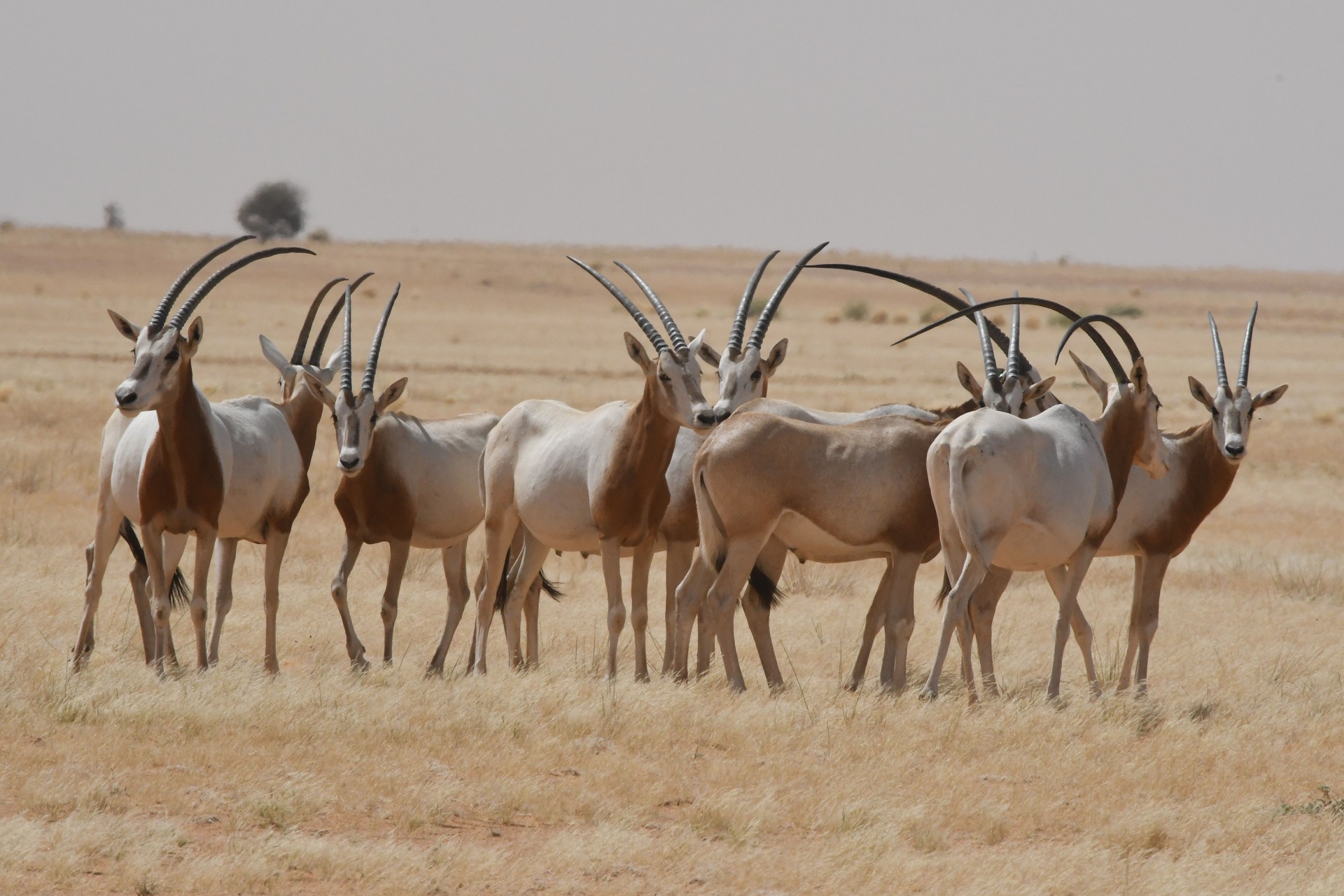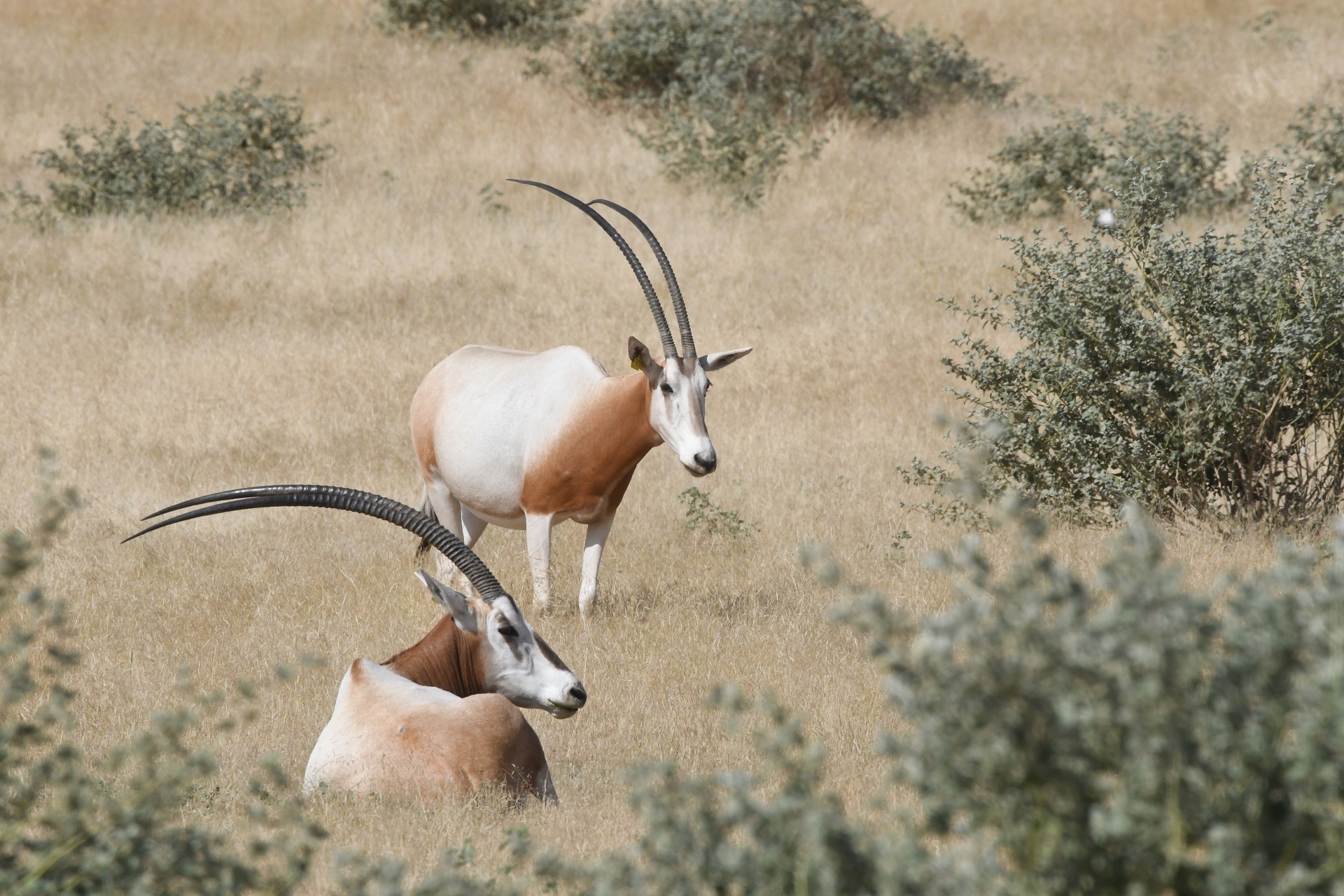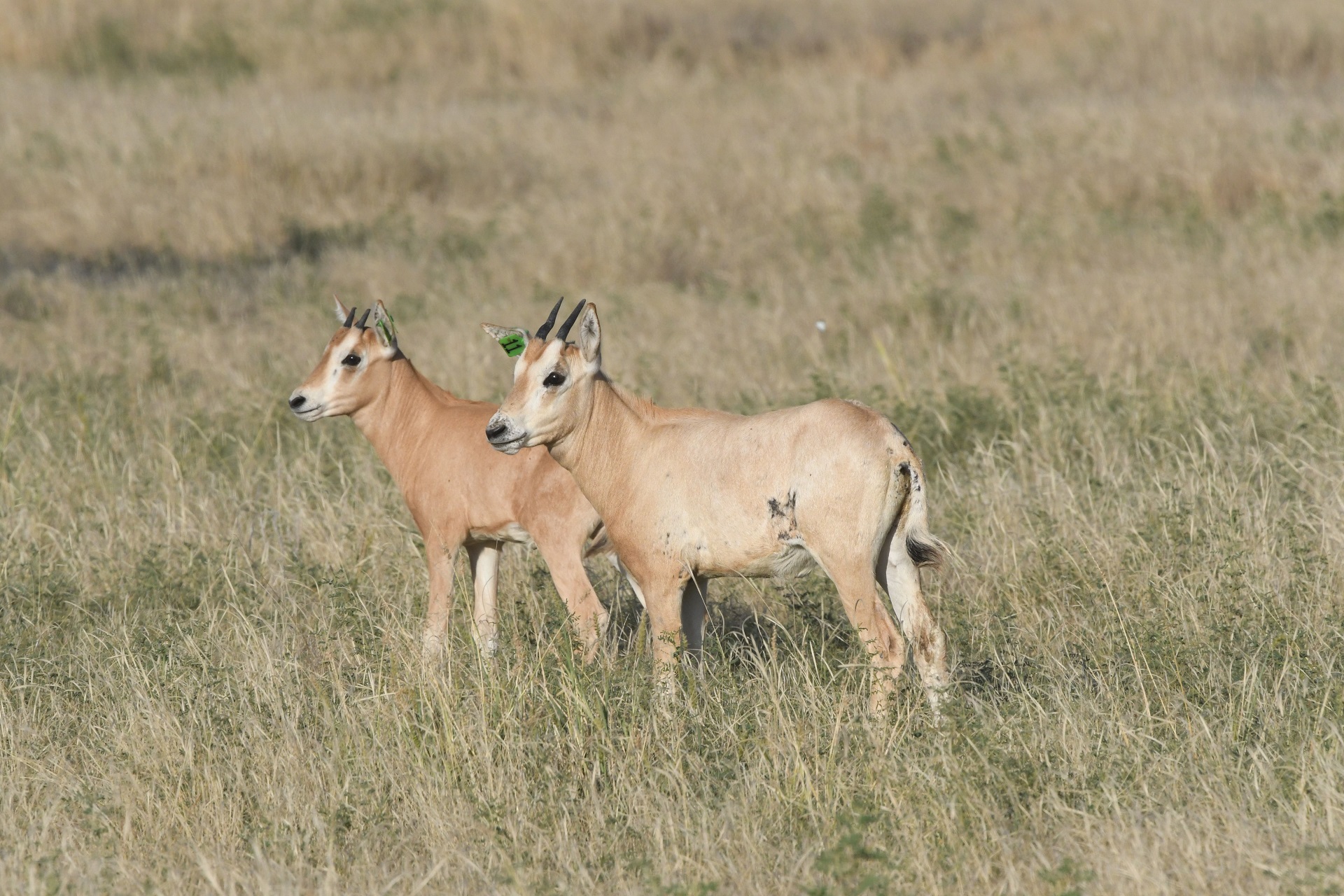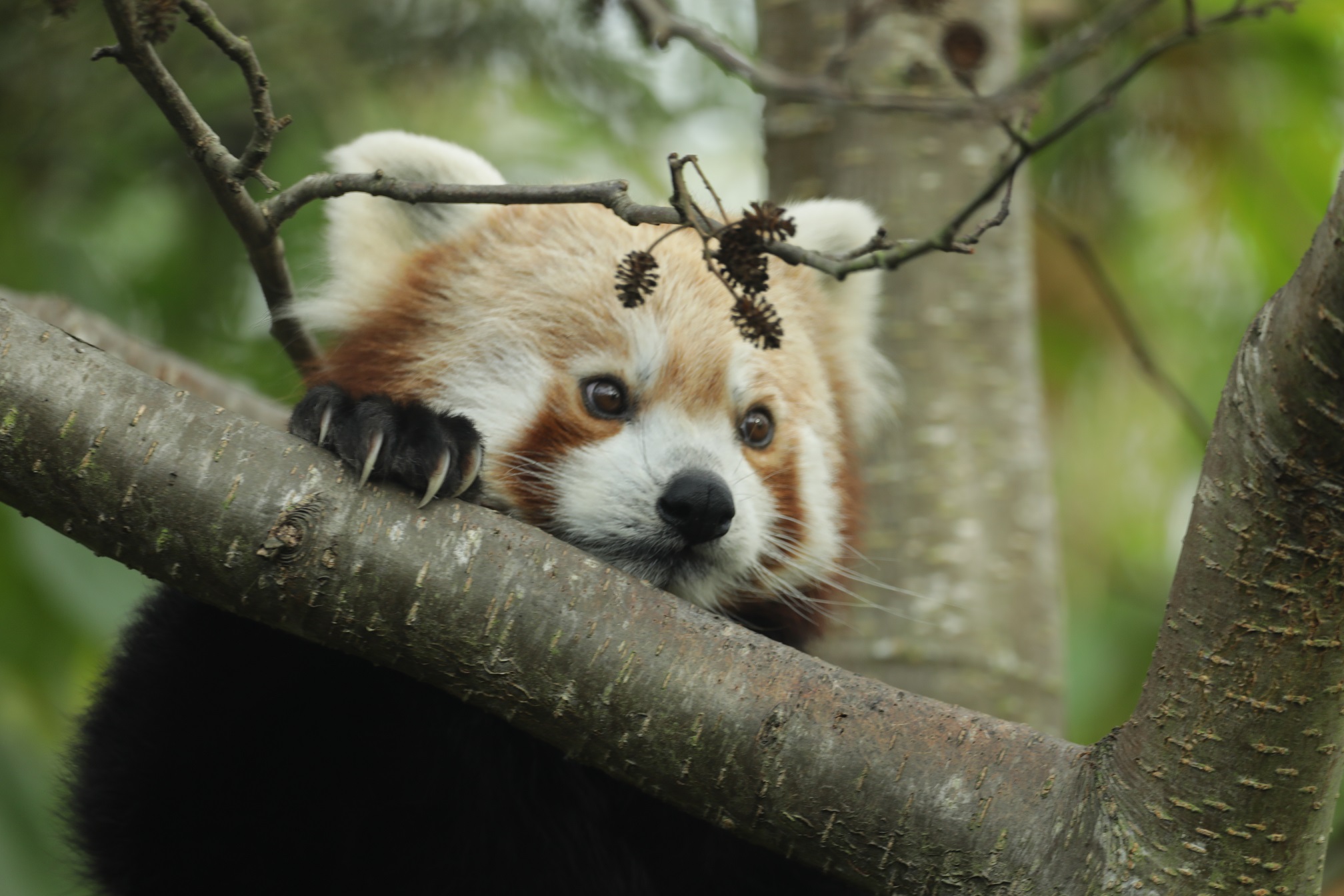Scimitar-Horned Oryx Day: How we are helping the scimitar-horned oryx make a strong comeback
Posted 16 Aug 2025

If you travel to Africa’s arid Sahel region, there’s a chance that you will see a scimitar-horned oryx. The same could not have been said 25 years ago.
In 2000, the IUCN Red List of Threatened Species declared the species extinct in the wild. Hunting, habitat fragmentation and competition with livestock had caused a dramatic decline in scimitar-horned oryx populations.
It was through international collaboration involving governments, NGOs and zoos that the future for this striking antelope began to change. Through a captive breeding project, the scimitar-horned oryx was reintroduced. Today, over 600 scimitar-horned oryx can once again be found roaming in Chad.
This successful reintroduction has led to the species being downlisted on the IUCN Red List of Threatened Species - from Extinct in the Wild to Endangered. It’s a powerful example of how conservation can make a real difference.
Viewed in retrospect, it’s easy to assume that the process was as straightforward as breeding captive oryx and releasing them. In practice, the path to success has been anything but simple. Alongside the complex logistics, politics and legal considerations, the science behind reintroduction is critical, especially when it comes to biology.

It’s in the genes
For any reintroduced species to thrive, it must have a genetically diverse population. Genetic diversity provides resilience against illness, disease and environmental change. A narrow gene pool simply isn’t an option for the long-term survival and stability of a population.
The Royal Zoological Society of Scotland and Edinburgh Zoo have long been invovled in the conservation of the scimitar-horned oryx. For example, in 1985, oryx from Marwell Zoo and Edinburgh Zoo, coordinated by the Zoological Society of London, were transferred to Tunisia.
Since 2012, RZSS has been involved through our zoo-based genetics lab, RZSS WildGenes. Currently led by conservation programme manager Dr Alex Ball, the team have provided crucial analyses of genetic diversity within the captive population and helped select the most suitable individuals for release into Chad. This has been due to strong partnerships, especially with the Environment Agency Abu Dhabi. It has also included groundbreaking work trialling new genomic techniques, ensuring that the oryx not only return to the wild but are set up to thrive there for generations to come.

A chance to celebrate and look forward
Sophie Whitemore, the international studbook keeper for the scimitar-horned oryx, believes that Scimitar-Horned Oryx Day is about more than just awareness, but creating a “chance to pause and recognise what conservation can achieve when people, passion and science come together.” We at RZSS feel the same.
So, to celebrate Scimitar-Horned Oryx Day, we spoke with Dr Helen Senn, head of conservation at RZSS, and Dr Jo Howard-McCombe, research scientist at RZSS WildGenes. They shared their ongoing experiences, key lessons learned, and favourite memories from working on the remarkable project to bring scimitar-horned oryx back from extinction.
Helen Senn reminiscences fondly on her time in the UEA preparing animals for reintroduction, including a moment she had to quickly move out of the way to avoid an oryx horn. While she has fond memories of the experience, she also reflects on sobering genetic data which shows the oryx now occupies just 1% of its former range. Dr Senn also stresses how important collaboration has been, and will continue to be, for the success of future projects.
Here, Dr Jo Howard-McCombe discusses the challenges of working with genetic data across long distances and highlights why genetics is so important in reintroductions. By understanding the genetic makeup of populations, conservation teams can give reintroduced animals the best possible chance of thriving.
This Scimitar-Horned Oryx Day, we should all celebrate how far the project has come, the successful collaboration with partners and seeing this beautiful animal back in the wild. But the work isn’t over - we’re also looking ahead to what’s needed to keep supporting the scimitar-horned oryx for the long term.

